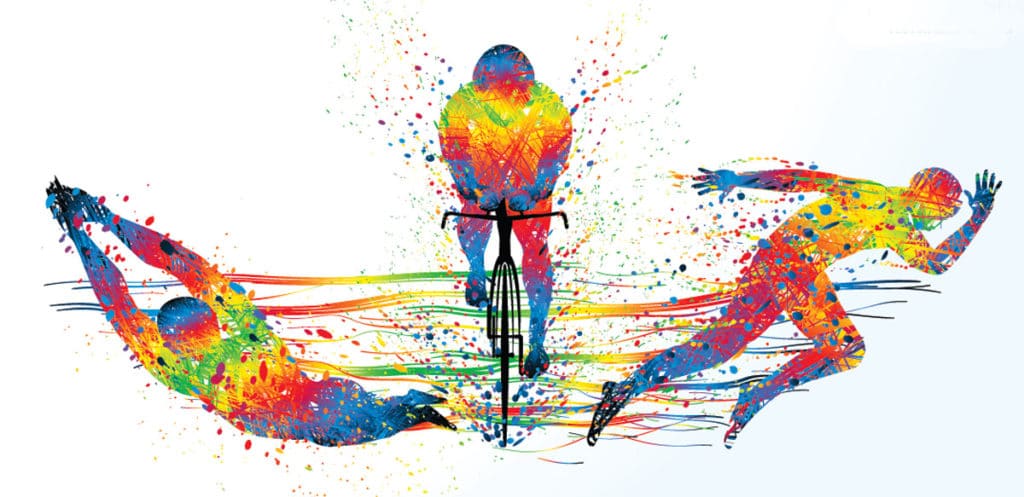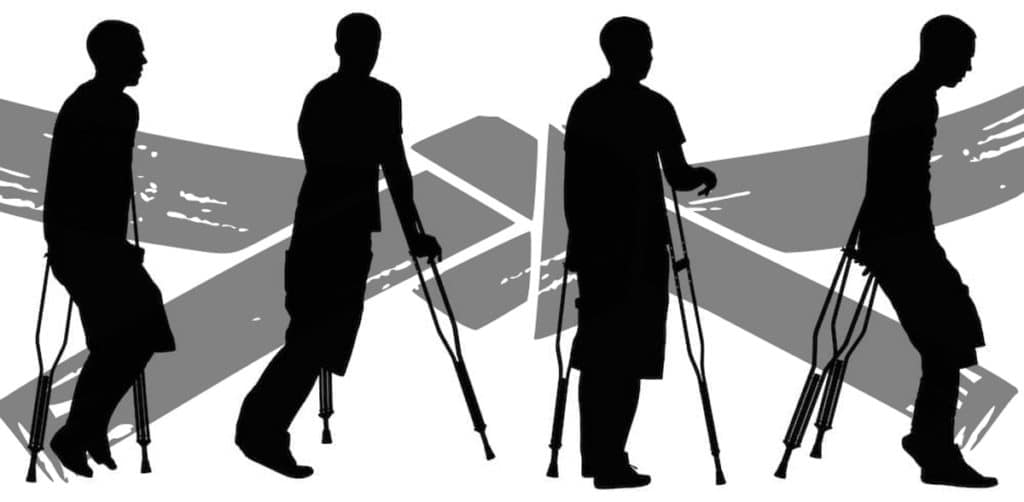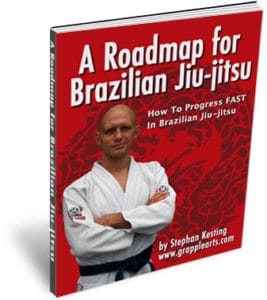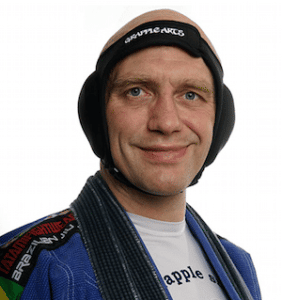Nothing brings your progress to a screeching halt like an injury. Therefore the goal is to get as much benefit from your training while at the same time minimising the chances of getting injured during that training.
To do that we have to recognise that some aspects of training are just more inherently risky than others. And we have to consider how much benefit we’re likely to get from that training.
Let’s start by taking a look at risk-to-reward ratios with an example that’s not from jiu-jitsu…

Risk-to-reward ratios in triathlon training
I have a few friends who do high-level triathlon, a sport which consists of swimming, biking and running.
They want to turn themselves into cardiovascular machines. Nothing but heart and lungs on a pair of stilts.
Now you might think that since there are three events they’d spend equal time training swimming, biking, and running. For example, if they ran for 4 hours a week they’d also swim and bike for 4 hours a week.
But that’s NOT the case. They spend WAY more time on the bike than they do on the other two sports.
In part, it’s because the risk-to-reward ratio of running is high. Running is just much harder on the body than biking; the higher levels of impact means the chance of getting injured per hour of running is just much higher than the chance of getting injured per hour of biking.
Fortunately there’s a crosstraining effect from biking to running. The cardiovascular fitness they develop on the bike is mostly transferable, so doing lots of relatively-safe biking helps them get better at both running and biking.
What on earth does this have to do with jiu-jitsu? Well, let’s move on to the mat…

The risk-to-reward ratio of different BJJ training modalities
Jiu-jitsu is an inherently dangerous sport.
The real opponent we face on the mats is the spectre of injury because you can’t train if you’re injured, and you can’t get better if you can’t train.
So we have to consider the risk-to-reward ratio of our strategies, techniques, and our training methods.
Here’s a list of things you might do to improve your jiu-jitsu, ranked from most to least dangerous…
- Competition (most dangerous)
- Competition style sparring
- Regular sparring
- Positional sparring and/or FYJJ training
- Partner drilling
- Strength and conditioning (least dangerous)
First comes competition. The injury risk per hour of competing in the adrenalised tournament setting is many times that of regular training in class.
In wrestling, for example, it’s been estimated that 80% of catastrophic injuries occur during competition, despite the fact that wrestlers spend much more time practicing than competing.
On the flipside there are many benefits to competition. Competing really sharpens your skills and also, surprisingly, helps with your self defense skills because it teaches you how to manage your nerves and keep thinking in stressful situations.
To quote one of my coaches, “Sometimes you learn more in a single competition than you do in 6 months of training.”
That establishes competition as a high-risk, high-reward activity. I think it’s good for most practitioners to experience it but unless you want to be a high level competitor you should only do so occasionally.
Ultimately whether you compete and how often you compete is up to you. It depends on your goals, your mindset, and the state of your body.
View this post on Instagram
Sparring is really important to the development of your jiu-jitsu skills, and the risk-to-reward ratio of sparring is quite variable.
Obviously the more hard sparring you do the more dangerous it is. If you go with the wrong people it becomes more dangerous. And sadly including takedowns in your sparring greatly increases the chance of injury too.
Some people approach every round with a life and death attitude, and they inevitably injure themselves (and others) at regular intervals. But you can go too light as well; if all you ever do is flow roll and never really contest anything then you’re not really going to get enough challenge to improve much.
It’s true; no sparring, no miracles. Just be mindful about who you go with and how hard you go.
As you constrain the possibilities of what can happen in sparring you start moving towards positional sparring and FYJJ training (as developed by Rob Biernacki). Your training should include a fair bit of this because it’s relatively safe and can be very effective at building your skills.
Partner drilling is when you and your partner go through a move or series of moves with minimal resistance in order to master the movements. This is useful to learn or review a move, but you quickly run into the point of diminishing returns (for the same reason that most people lose their enthusiasm for grappling dummies once they get one).
Finally comes strength and conditioning.
Strength DOES help your jiu-jitsu, weight training DOES reduce injuries, and cardio DOES help most people’s performance on the mat.
(Not to mention all those extra health benefits like increased bone density, decreased chance of heart attack and stroke, improved insulin sensitivity, increased lifespan, etc.)
As your skills improve and you’re more able to dominate people with technique. That means it now gets harder to get your conditioning just from sparring alone, which is why just about every top competitor does some form of strength and conditioning.
An intelligently designed, well-coached strength and conditioning program is unlikely to injure you and can have great benefits for your jiu-jitsu. Even an hour a week can have a huge payoff.
The bottom line is that you should carefully consider the risk-to-reward ratio of every part of your training program. Find the modalities that give you the most benefit for the least risk and make those the mainstay of your training.
Related Articles
A Roadmap for BJJ, with Stephan Kesting
The classic guide to BJJ positions, techniques, and strategies by Stephan Kesting. Yours free in exchange for your best email address below…
Fixing Martial Arts Back Pain, with Dr Stuart McGill
Back pain is incredibly common in sport, including all martial arts and combative sports. That’s why I was thrilled to talk to Dr Stuart McGill, one of the world’s leading experts on back pain.
Dr. McGill is considered to be one of the world’s foremost experts on the spine, back pain and rehabilitation. He is an author, scientist, clinician and was a professor emeritus at the University of Waterloo for 30 years. His labs did research into the mechanism of back pain and rehabilitative processes for everyone from athletes to everyday citizens.
It’s the Ego, Stupid! How to Prevent (Most) BJJ Injuries
I’m just getting over an injury that was completely, utterly, absolutely my own fault.
I was taking it easy during a sparring session with an older, lighter lower belt and ended up in caught in a crazy omoplata/kimura/crucifix position. I should just have tapped out and carried on, but instead my ego got in the way and I kept on holding on, looking for a way out for far too long.
Yes, I got out eventually but I paid a price. Thankfully, however, I got off relatively lightly; it could have been much worse.
How Hard Should You Go in Sparring?
Serious training requires focus and intent when you’re on the mat. Those precious few hours of training every week deserve your complete attention so you can get good faster; life is too short for half-ass mediocrity.
Ask any black belt you like: they’ll agree that making an effort, staying focused, and paying attention is critical to your training. But this is MENTAL effort. MENTAL focus. MENTAL attention.
Some people, however, confuse 100 percent focus with going at 100 percent maximum physical effort for every single technique…
The post Risk-to-Reward Ratios in BJJ Training appeared first on Grapplearts.




